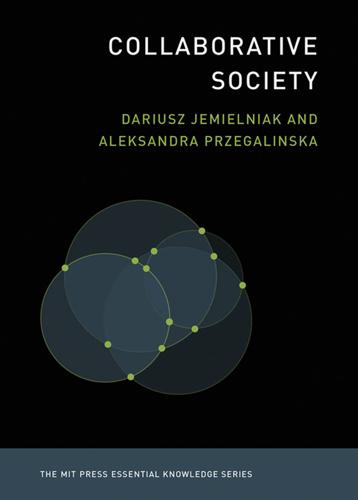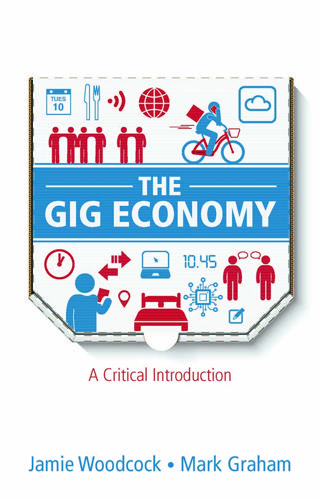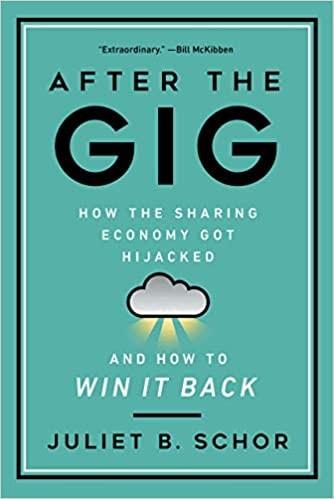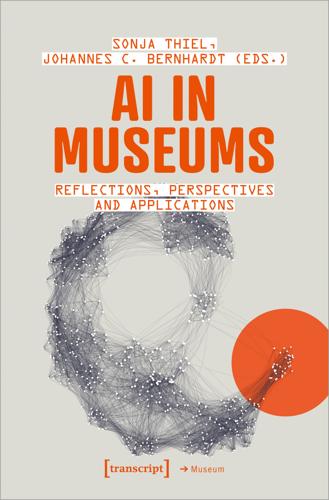
Ghost Work: How to Stop Silicon Valley From Building a New Global Underclass
by
Mary L. Gray
and
Siddharth Suri
Published 6 May 2019
Investigating them alongside one another helped show us that our observations and conclusions hold broadly across the on-demand economy, as opposed to being specific to one category of ghost work. MTurk, as one of the first commercially available ghost work platforms, set the norms for how others would apply human computation to business solutions. UHRS stands in for the internal platforms that every large tech company maintains to meet its own ghost work demands. LeadGenius and Amara illustrate just how complex and sophisticated ghost work can be, as well as how much companies can play a role in designing better conditions for ghost work. And then there were the workers. Among those working on these platforms, we met people stringing together on-demand projects to re-create the work hours, pay rates, and career development associated with full-time employment.
…
WHEN YOUR WORK HAS NO CATEGORY The paradox of automation’s last mile suggests that the shift to using ghost work to deliver services is just heating up.32 As of today, there are hundreds of companies offering on-demand ghost work services to evaluate, sort, annotate, and refine the terabytes of “big data” that consumers produce every moment they spend online, and an explosion of companies hosting larger tasks that are, at least in part, managed by APIs.33 Still, treating ghost work as a consumable good drains ghost work jobs of any protections. It can be difficult for those involved to fully see and value the expansive range of ghost work. Complicating the issue is that workers themselves don’t know how to categorize their work or their status as workers, making it harder to figure out what people performing ghost work might want or need.
…
But wouldn’t working at the local mall or a fast food restaurant chain be better than ghost work? It depends on how one defines “better.” Stable, decent-paying service sector jobs are not as easy to come by as a reader might imagine. And for those people experimenting with or committed to ghost work, the decision to keep doing ghost work, once they made it past the immediate need for emergency cash, is complicated. Once workers met basic needs, they stuck with ghost work for reasons that were about more than the money. Those people did ghost work because they felt that it offered an escape route, or at least temporary relief, from the pressures and hurdles they had come to associate with a more typical day job.

Collaborative Society
by
Dariusz Jemielniak
and
Aleksandra Przegalinska
Published 18 Feb 2020
A contingent workforce, by the way, operates with radical information asymmetry: in this context specifically, workers are at a disadvantage because they deal with corporations that create an extensive system of gamification and psychological trickery to coerce “contractors” into working longer hours.30,31 A contingent workforce also faces an unprecedented power asymmetry that allows corporations to intercept most of the value generated by independent workers.32 Moreover, that exploitation is highly gendered and racialized.33 Silicon Valley is using technology to build a new global underclass, forced to perform what Mary L. Gray and Siddharth Suri aptly call “ghost work,” dehumanized and invisible labor streamlined by apps and intermediary platforms.34 Figure 1 A Google Trends graph measures interest in the sharing economy (in black) versus the gig economy (in gray) according to search engine statistics from 2014–2019. Source: https://g.co/trends/TvMAB Because of these practices and conditions, some authors propose the use of platform capitalism to refer to the ongoing phenomena of corporate domination in the “sharing economy.”35 This term well reflects the economic drive of the capital market to harness the power of cutting-edge technologies, disempower users, and turn them into workers and customers, rather than inspire them to actually share anything.
…
Open Access Journal for a Global Sustainable Information Society 12 (2014): 356–361. 33. N. van Doorn, “Platform Labor: On the Gendered and Racialized Exploitation of Low-Income Service work in the ‘On-Demand’ Economy,” Information, Communication and Society 20 (2017): 898–914. 34. M. L. Gray and S. Suri, Ghost Work: How to Stop Silicon Valley from Building a New Global Underclass (Houghton Mifflin Harcourt, 2019). 35. N. Srnicek, Platform Capitalism (John Wiley & Sons, 2017). 36. Slee, What’s Yours Is Mine. 37. I. Constantiou, A. Marton, and V. K. Tuunainen, “Four Models of Sharing Economy Platforms,” MIS Quarterly Executive 16, no. 4 (2017): 231–251. 38.
…
Free Culture: How Big Media Uses Technology and the Law to Lock Down Culture and Control Creativity. New York: Penguin, 2004. Suber, P. Knowledge Unbound: Selected Writings on Open Access, 2002–2011. Cambridge, MA: MIT Press, 2016. More about digital platforms and sustainability Gray, M. L., and S. Suri. Ghost Work: How to Stop Silicon Valley from Building a New Global Underclass. Boston: Houghton Mifflin Harcourt, 2019. Rainie, L., and B. Wellman. Networked: The New Social Operating System. Cambridge, MA: MIT Press, 2012. Srnicek, N. Platform Capitalism. New York: John Wiley & Sons, 2017. Terranova, T.

Internet for the People: The Fight for Our Digital Future
by
Ben Tarnoff
Published 13 Jun 2022
They also perform the repetitive tasks that keep the machinery of online malls running, from labeling training datasets for machine learning models to scrubbing social media sites of obscene or offensive content. This latter layer is what anthropologist Mary L. Gray and computer scientist Siddharth Suri call “ghost work,” and it is especially large and especially global. From Kenya to India to the United States, workers are hunched over monitors, being timed on how quickly they flag a “dick pic” or classify a photo of a dog. They are the human automata that automated systems, or systems that appear to be automated, are built on.
…
(New York: Monthly Review Press, 2004 [1995]), 92–94. 117, Networking “supported organizations …” Ibid., 94. 117, In this respect, the internet … Marc Levinson, The Box: How the Shipping Container Made the World Smaller and the World Economy Bigger (Princeton: Princeton University Press, 2006). 118, It “has created a massive …” “Has created …”: Mueller, Breaking Things at Work, 119. Immense “back office”: Ibid., 117–19, and Mary L. Gray and Siddharth Suri, Ghost Work: How to Stop Silicon Valley from Building a New Global Underclass (Boston: Houghton Mifflin, 2019). 119, Uber is one of the main … Singularly unprofitable: In September 2021, Uber said that it could post its first profit on an adjusted basis in Q3 2021, following a similar announcement by Lyft in the previous quarter.
…
“It is too late …”: Schifter’s suicide note, available at imgur.com/gallery/M24BM. 131, For every worker … According to the staffing agency directory OnContracting, contingent labor accounts for 40 to 50 percent of the workforce at most tech firms; see Daisuke Wakabayashi, “Google’s Shadow Work Force: Temps Who Outnumber Full-Time Employees,” New York Times, May 18, 2019. Google is especially reliant on contingent labor; the company has more temps, vendors, and contractors (TVCs) than full-time employees. 131, They also perform … Gray and Suri, Ghost Work. 132, This shadow workforce is just … A 2016 report found that average earnings for direct employees in Silicon Valley was $113,300, while white-collar contract workers made $53,200 and blue-collar contract workers made $19,900. The same study found that contract workers receive few benefits: 31 percent of blue-collar contract workers had no health insurance at all.

Blood in the Machine: The Origins of the Rebellion Against Big Tech
by
Brian Merchant
Published 25 Sep 2023
From Amazon’s Mechanical Turk Phil Jones discusses the phenomenon of tech companies enabling their “automated” products by employing low-wage workers around the world, often in the global South, and even sourcing labor from refugee camps, in Work without the Worker: Labour in the Age of Platform Capitalism (London: Verso, 2021). 12. “ghost work” This is the topic of a fine book by researchers Mary L. Gray and Siddharth Suri: Ghost Work: How to Stop Silicon Valley from Building a New Global Underclass (Boston: Houghton Mifflin Harcourt, 2019). 13. “not only did that device” Alexandra Mateescu and Madeleine Clare Elish studied the impacts of self-checkout and published the findings in a paper called “AI in Context: The Labor of Integrating New Technologies,” Data & Society, January 30, 2019.
…
We might marvel at the progress of, say, the self-driving car, but its autonomous navigation requires the labor of numerous invisible workers who do the thankless, drudgery-filled toil, often for very low wages, of labeling image after image to make the datasets the algorithm needs in order to operate. From Amazon’s Mechanical Turk to refugee camps in Europe, workers are paid pennies to sort endless reams of data, the raw materials for computer vision programs and self-driving vehicles. The researchers Mary L. Gray and Siddharth Suri call this “ghost work”—and it’s still ascendent today. The autonomous delivery robots now common on American college campuses and downtown areas may replace delivery people—but they are digitally overseen by other workers who can control them remotely, from places like Colombia, for $2 an hour. It’s the same story, time and again: a new technology that promises to alleviate work degrades it instead.
…
“Revolutionary Readings: Mary Shelley’s Frankenstein and the Luddite Uprisings.” Iowa Journal of Cultural Studies, vol. 13 (1994), 70–91. Gaskill, Elizabeth Cleghorn. The Life of Charlotte Brontë. Cambridge: Cambridge University Press, 2010. Godwin, William. An Enquiry Concerning Political Justice. London, 1793. Gray, Mary L., and Siddharth Suri, Ghost Work: How to Stop Silicon Valley from Building a New Global Underclass. Boston: Houghton Mifflin Harcourt, 2019. Hammond, J. L., and Barbara Hammond. The Skilled Labourer: 1760–1832. London: Longmans, Green, 1919. Henson, Gravener. The Civil, Political, and Mechanical History of the Framework-Knitters in Europe and America, Including a Review of the Political State and Condition of the People of England, and an Account of the Rise, Progress, and Present State of the Machinery for Superseding Human Labour, in the Various Manufactures of Europe, since the Fifteenth Century, Exhibiting the True and Real Cause of The Present Convulsed State of the Western World.

Futureproof: 9 Rules for Humans in the Age of Automation
by
Kevin Roose
Published 9 Mar 2021
This kind of transformation is now happening in white-collar workplaces, as AI and automation make it possible for companies to squeeze out all the inefficiencies and downtime that once gave workers a chance to take a breath and talk to one another. AI and automation have also created entirely new categories of boring, repetitive jobs, many of which we don’t see in the West. Mary L. Gray and Siddharth Suri have written about the rise of “ghost work,” a phenomenon in which human labor, carefully concealed from the end user, is deployed to make AI and automated systems function properly. Social networks like Facebook, Twitter, and YouTube rely on armies of low-paid contractors who sift through objectionable content all day, deciding which posts to leave up and which to take down.
…
Twenge, “Are Mental Health Issues on the Rise?,” Psychology Today, October 12, 2015. The historian David Nye writes David E. Nye, Electrifying America: Social Meaning of a New Technology (Cambridge, Mass.: MIT Press, 1990). Mary L. Gray and Siddharth Suri have written Mary L. Gray and Siddharth Suri, Ghost Work: How to Stop Silicon Valley from Building a New Global Underclass (New York: Houghton Mifflin Harcourt, 2019). In China, “data labeling” companies Li Yuan, “How Cheap Labor Drives China’s A.I. Ambitions,” New York Times, November 25, 2018. One study, a 2019 preprint meta-analysis Gagan Bansal et al., “Does the Whole Exceed Its Parts?

Empire of AI: Dreams and Nightmares in Sam Altman's OpenAI
by
Karen Hao
Published 19 May 2025
* * * — At a time when freewheeling corporate research was still permitted, Microsoft anthropologist Mary L. Gray and computational social scientist Siddharth Suri were among the first to show the world the plight of workers like those in Kenya who build their livelihoods around an essential piece of the AI supply chain. In 2019, they published their book Ghost Work, based on five years of extensive fieldwork, revealing a hidden web of piecemeal labor and digital exploitation that propped up Silicon Valley. Tech giants and unicorns were building their extravagant valuations not just with engineers paid six-figure salaries in trendy offices. Essential, too, were workers, often in the Global South, being paid pennies to carefully annotate reams of data.
…
And from a company’s perspective, the cheaper they do it, the better. Gray and Suri’s research focused in part on Mechanical Turk, a platform developed by Amazon many years before the deep learning boom in 2012, which for a long time served as the de facto middleman for companies looking to hire someone cheap for any kind of piecemeal digital labor. By the time Ghost Work came out, the first era of AI commercialization was already evolving, building upon, and rapidly expanding this outsourcing model. I began mapping out the new shape of this hidden workforce, unearthing a sprawling global pipeline of labor spanning many countries, both expected and surprising.
…
These categories correspond to those available in OpenAI’s content moderation API, which can be viewed here: “Moderation,” OpenAI Platform, OpenAI, accessed October 17, 2024, platform.openai.com/docs/guides/moderation. GO TO NOTE REFERENCE IN TEXT For one of them: Author interviews with Mophat, his brother Albert, one of his friends, and Mutemi, 2023. GO TO NOTE REFERENCE IN TEXT In 2019, they published: Mary L. Gray and Siddharth Suri, Ghost Work: How to Stop Silicon Valley from Building a New Global Underclass (Harper Business, 2019), 1–288; and author interview with Mary L. Gray, May 2019. GO TO NOTE REFERENCE IN TEXT Before generative AI: Florian Alexander Schmidt, “Crowdsourced Production of AI Training Data—How Human Workers Teach Self-Driving Cars How to See,” Working Paper Forschungsförderung 155 (2019), hdl.handle.net/10419/216075.

Wonderland: How Play Made the Modern World
by
Steven Johnson
Published 15 Nov 2016
Along with the Panorama and the Phantasmagoria, a visitor to London in the early 1800s could enjoy a “Novel Mechanical and Pictorial Exhibition” called the Akolouthorama; a predecessor to Philipsthal’s spook show called the Phantascopia; an exhibition called the Spectrographia, which promised “TRADITIONARY GHOST WORK!”; an influential mechanical exhibition dubbed the Eidophusikon; the Panstereomachia, “a picto-mechanical representation,” according to the Times. A virtual orchestra created by a painter and musician named J. J. Gurk entertained audiences with performances of “Rule, Britannia.” (Confusingly, it was also called the Panharmonicon, though it had nothing to do with Maelzel’s device.)
…
Ohl and Joseph Earl Arrington, “John Maelzel, Master Showman of Automata and Panoramas,” Pennsylvania Magazine of History and Biography 84:1 (1960), 79. “The city was before us”: Ibid. “A musket machine”: Ibid. “Novel Mechanical and Pictorial Exhibition”: Altick, 131. “TRADITIONARY GHOST WORK!”: Ibid. “You are allowed to look”: Altick, 231. “no one thought of clothing”: Neal Gabler, Walt Disney (New York: Knopf Doubleday, 2006, Kindle edition), Kindle locations 3758–3763. pencil tests: “In short order, Walt installed a Moviola in a cramped, stifling, windowless closet that was soon dubbed the ‘sweatbox.’

Code Dependent: Living in the Shadow of AI
by
Madhumita Murgia
Published 20 Mar 2024
The stated goal of AI companies and the outsourcers they work with is to include these communities in the digital revolution, giving them stable and ethical employment despite their precarity. Yet, as I came to discover, data workers are as precarious as factory workers, their labour is largely ghost work and they remain an undervalued bedrock of the AI industry.4 As this community emerges from the shadows, journalists and academics are beginning to understand how these globally dispersed workers impact our daily lives: the wildly popular content generated by AI chatbots like ChatGPT, the content we scroll through on TikTok, Instagram and YouTube, the items we browse when shopping online, the vehicles we drive, even the food we eat, it’s all sorted, labelled and categorized with the help of data workers.
…
utm_source=prnewswire&utm_medium=referral&utm_campaign=ICT_30-March-23&utm_term=data_collection_labeling_market&utm_content=rd1. 2 Karen Hao and Andrea Paola Hernández, ‘How the AI Industry Profits from Catastrophe’, MIT Technology Review, April 20, 2022, https://www.technologyreview.com/2022/04/20/1050392/ai-industry-appen-scale-data-labels/. 3 Madhumita Murgia, ‘AI’s New Workforce: The Data-Labelling Industry Spreads Globally’, Financial Times, June 24, 2019, https://www.ft.com/content/56dde36c-aa40-11e9-984c-fac8325aaa04. 4 Mary L. Gray and Siddharth Suri, Ghost Work: How to Stop Silicon Valley from Building a New Global Underclass (Houghton Mifflin Harcourt Publishing, 2019). 5 Sama, ‘Sama by the Numbers’, February 11, 2022, https://www.sama.com/blog/building-an-ethical-supply-chain/. 6 Sama, ‘Environmental & Social Impact Report’, June 14, 2022, https://etjdg74ic5h.exactdn.com/wp-content/uploads/2023/07/Impact-Report-2023-2.pdf. 7 Ayenat Mersie, ‘Court Rules Meta Can Be Sued in Kenya over Alleged Unlawful Redundancies’, Reuters, April 20, 2023, https://www.reuters.com/technology/court-rules-meta-can-be-sued-kenya-over-alleged-unlawful-redundancies-2023-04-20/. 8 David Pilling and Madhumita Murgia, ‘“You Can’t Unsee It”: The Content Moderators Taking on Facebook’, Financial Times, May 18, 2023, https://www.ft.com/content/afeb56f2-9ba5-4103-890d-91291aea4caa. 9 Billy Perrigo, ‘Inside Facebook’s African Sweatshop’, Time, February 17, 2022, https://time.com/6147458/facebook-africa-content-moderation-employee-treatment/. 10 Milagros Miceli and Julian Posada, ‘The Data-Production Dispositif’, CSCW 2022.

The Costs of Connection: How Data Is Colonizing Human Life and Appropriating It for Capitalism
by
Nick Couldry
and
Ulises A. Mejias
Published 19 Aug 2019
Other constraints, such as the capacities and willingness of the reserve army of human piece-workers who adjust the automated system’s early attempts to sort and code unstructured data, are generally treated as below the line and so as not affecting the proxy’s validity for knowledge. See Gray and Suri, Ghost Work. 69. Brayne, “Big Data Surveillance,” 20. 70. Rouvroy, “End(s) of Critique,” 143. 71. Grosser, “What Do Metrics Want?” 72. From the Mindshare media and marketing agency, cited in PricewaterhouseCoopers, “Wearable Future,” 42. 73. This is the large-scale correlate of how the “personalized” results that individuals receive when they search the online world are skewed by Google’s background calculations of what “someone like them” would want to see.
…
July 27, 2017. https://advox.globalvoices.org/2017/07/27/can-facebook-connect-the-next-billion/. Gomez-Uribe, Carlos. “A Global Approach to Recommendations.” Netflix (blog), February 17, 2016. https://media.netflix.com/en/company-blog/a-global-approach-to-recommendations. Gray, Mary, and Siddharth Suri. Ghost Work. New York: Houghton Mifflin Harcourt, 2019. Greenberg, Andy. “Apple’s Latest Selling Point: How Little It Knows about You.” Wired, June 8, 2015. https://www.wired.com/2015/06/apples-latest-selling-point-little-knows/. Greene, Daniel, and Genevieve Patterson, “The Trouble with Trusting AI to Interpret Policy Body-Cam Video.”

Democracy's Data: The Hidden Stories in the U.S. Census and How to Read Them
by
Dan Bouk
Published 22 Aug 2022
From Folder “Pictures Taken in Indiana Trial Census August 1939,” Box 234, Entry 215, RG 29, NARA, D.C. 17. Steven Ruggles and Diana L. Magnuson, “Census Technology, Politics, and Institutional Change, 1790–2020,” Journal of American History 107, no. 1 (2020): 19–51. 18. Mary L. Gray and Siddarth Suri, Ghost Work: How to Stop Silicon Valley from Building a New Global Underclass (New York: Houghton Mifflin Harcourt, 2019). 19. From Folder “Pictures Taken in Indiana Trial Census August 1939,” Box 234, Entry 215, RG 29, NARA, D.C. 20. On typewriters and computers as people, see Margery W. Davies, Woman’s Place Is at the Typewriter: Office Work and Office Workers, 1870–1930 (Philadelphia: Temple University Press, 1982); Jennifer S.
…
New York: New York University Press, 2018. Gordon, Linda. Dorothea Lange: A Life Beyond Limits. New York: W. W. Norton, 2009. Gratton, Brian, and Emily Klancher Merchant. “La Raza: Mexicans in the United States Census.” Journal of Political History 28, no. 4 (2016): 537–67. Gray, Mary L., and Siddarth Suri. Ghost Work: How to Stop Silicon Valley from Building a New Global Underclass. New York: Houghton Mifflin Harcourt, 2019. Greville, Thomas N. E. United States Life Tables and Actuarial Tables 1939–1941. Washington, D.C.: Government Printing Office, 1946. Grier, David Alan. When Computers Were Human. Princeton, NJ: Princeton University Press, 2013.

The Lonely Century: How Isolation Imperils Our Future
by
Noreena Hertz
Published 13 May 2020
The Elementary Forms of the Religious Life. Translated by Carol Closman. Edited by Mark Cladis (Oxford: Oxford University Press, 2008). Field, Tiffany. Touch. Second Edition (Cambridge, Mass: MIT Press, 2014). Frey, Carl Benedikt. The Technology Trap (Princeton: Princeton University Press, 2019). Gray, Mary L., and Siddharth Suri. Ghost Work: How to Stop Silicon Valley from Building a New Global Underclass (New York: Houghton Mifflin, 2019). Harcourt, Bernard E. Illusion of Order: The False Promise of Broken Windows Policing (Cambridge, Mass: Harvard University Press, 2001). Held, David. Models of Democracy. Third Edition (Cambridge: Polity Press, 2006).
…
IR=T. 45 https://www.glassdoor.com/Reviews/Employee-Review-Bridgewater-Associates-RVW28623146.htm 46 https://www.glassdoor.com/Reviews/Employee-Review-Bridgewater-Associates-RVW25872721.ht. 47 https://www.glassdoor.com/Reviews/Employee-Review-Bridgewater-Associates-RVW25450329.htm; Allana Akhtar, ‘What it’s like to work at the most successful hedge fund in the world, where 30% of new employees don’t make it and those who do are considered “intellectual Navy SEALs”’, Business Insider, 16 April 2019, https://www.businessinsider.com/what-its-like-to-work-at-ray-dalio-bridgewater-associates-2019-4. 48 Ibid. 49 Amir Anwar, ‘How Marx predicted the worst effects of the gig economy more than 150 years ago’, New Statesman, 8 August 2018, https://tech.newstatesman.com/guest-opinion/karl-marx-gig-economy. 50 Richard Partington, ‘Gig economy in Britain doubles, accounting for 4.7 million workers’, Guardian, 28 June 2019, https://www.theguardian.com/business/2019/jun/28/gig-economy-in-britain-doubles-accounting-for-47-million-workers; Siddharth Suri and Mary L. Gray, ‘Spike in online gig work: flash in the pan or future of employment?’, Ghost Work, November 2016, https://ghostwork.info/2016/11/spike-in-online-gig-work-flash-in-the-pan-or-future-of-employment/. 51 Thor Berger, Chinchih Chen, and Carl Frey, ‘Drivers of disruption? Estimating the Uber effect’, European Economic Review 110 (2018), 197–210, https://doi.org/10.1016/j.euroecorev.2018.05.006. 52 Professor Stephen Zoepf of MIT made a splash in March 2018 when he published findings that Uber drivers made an average of $3.37 per hour, a claim that Uber’s chief economist then refuted by challenging Zoepf’s methodology.

The Gig Economy: A Critical Introduction
by
Jamie Woodcock
and
Mark Graham
Published 17 Jan 2020
Graham, M., Lehdonvirta, V., Wood, A., Barnard, H., Hjorth, I. and Simon, D.P. (2017b) The Risks and Rewards of Online Gig Work at the Global Margins. Oxford: Oxford Internet Institute. Graham, M., Ojanpera, S., Anwar, M.A. and Friederici, N. (2017c) Digital connectivity and African knowledge economies. Questions de Communication, 32: 345–60. Gray, M.L. and Suri, S. (2019) Ghost Work: How to Stop Silicon Valley from Building a New Global Underclass. New York: Houghton Mifflin Harcourt. Gray, M.L., Suri, S., Ali, S.S. and Kulkarni, D. (2016), The crowd is a collaborative network. In CSCW’16: Proceedings of the 19th ACM Conference on Computer-Supported Cooperative Work & Social Computing, San Francisco, CA, 27 February–2 March.

After the Gig: How the Sharing Economy Got Hijacked and How to Win It Back
by
Juliet Schor
,
William Attwood-Charles
and
Mehmet Cansoy
Published 15 Mar 2020
“The Fairwork Foundation: Strategies for Improving Platform Work.” In Proceedings of the Weizenbaum Conference 2019 “Challenges of Digital Inequality: Digital Education, Digital Work, Digital Life.” Washington, DC, January 13–17, 2019. https://doi.org/10.34669/wi.cp/2.13. Gray, Mary L., and Siddharth Suri. 2019. Ghost Work: How to Stop Silicon Valley from Building a New Global Underclass. Boston: Houghton Mifflin. Griesbach, Kathleen, Adam Reich, Luke Elliott-Negri, and Ruth Milkman. 2019. “Algorithmic Control in Platform Food Delivery Work.” Socius: Sociological Research for a Dynamic World 5 (January). https://doi.org/10.1177/2378023119870041.

Let's Pretend This Never Happened (A Mostly True Memoir)
by
Jenny Lawson
Published 5 Mar 2013
He stared at me and told me that it was more likely a sign that the smoke detector was working properly until I murdered it after intentionally filling the house with smoke. It sounded much worse when Victor broke it out like that. This afternoon I sauntered into Victor’s office and said smugly, “So, apparently my ‘craazy’ plan for setting off the fire alarm to appease the ghosts worked, because guess who just found the dead bodies I’ve been searching for? ME, MOTHERFUCKER. I found the dead bodies.” Then I held up my hand for the inevitable high five, but instead he just hit the mute button on his office phone and dropped his head into his hands. Which was disappointing for both of us.

Don't Be Evil: How Big Tech Betrayed Its Founding Principles--And All of US
by
Rana Foroohar
Published 5 Nov 2019
Bubbles and Crashes: The Boom and Bust of Technological Innovation. Stanford, Calif.: Stanford University Press, 2019. Goldin, Claudia, and Lawrence F. Katz. The Race Between Education and Technology. Cambridge, Mass.: Belknap Press of Harvard University Press, 2008. Gray, Mary L., and Siddharth Suri. Ghost Work: How to Stop Silicon Valley from Building a New Global Underclass. New York: Houghton Mifflin Harcourt, 2019. Greene, Lucie. Silicon States: The Power and Politics of Big Tech and What It Means for Our Future. Berkeley, Calif.: Counterpoint, 2018. Greenfield, Kent. Corporations Are People Too (And They Should Act Like It).

AI in Museums: Reflections, Perspectives and Applications
by
Sonja Thiel
and
Johannes C. Bernhardt
Published 31 Dec 2023
/Pouget-Abadie, Jean/Mirza, Mehdi et al. (2014). Generative Adversarial Nets: Proceedings of the 27th International Conference on Neural Information Processing Systems (NIPS’ 14), 2672–80. Cambridge, MA, The MIT Press. https://doi.org/10.48550/arXiv.1406.2661. Gray, Mary L./Suri, Siddharth (2019). Ghost Work: How to Stop Silicon Valley from Building a New Global Underclass. Boston, Houghton Mifflin Harcourt. Ho, Jonathan/Jain, Ajay/Abbeel, Pieter (2020). Denoising Diffusion Probabilistic Models. arXiv:2006.11239. https://doi.org/10.48550/arXiv.2006.11239. Irani, Lily (2016). The Hidden Faces of Automation.

Accelerando
by
Stross, Charles
Published 22 Jan 2005
Sirhan demands angrily over the channel. He's still not looking at her, and not just because he's focusing on the vision in blue that dominates the shared space of the team meeting. "Stop lying to yourself," Rita sends back. "You're lying about your own goals and motivations. You may not want to know the truth your own ghost worked out, but I do. And I'm not going to let you deny it happened." "So one of your agents seduced a personality image of me –" "Bullshit –" "Do you mean to declare this platform openly?" asks the young-old guy near the platform, the Europol. "Because if so, you're going to undermine Amber's campaign –" "That's all right," Amber says tiredly, "I'm used to Dad supporting me in his own inimitable way."

Your Computer Is on Fire
by
Thomas S. Mullaney
,
Benjamin Peters
,
Mar Hicks
and
Kavita Philip
Published 9 Mar 2021
Daniel Raff and Peter Temin, “Sears, Roebuck in the Twentieth Century: Competition, Complementarities, and the Problem of Wasting Assets,” in Learning by Doing in Markets, Firms, and Countries, ed. Naomi R. Lamoreaux, Peter Temin, and Daniel Raff (Chicago: University of Chicago Press, 1998). 28. Richard Howard, “How I Escaped from Amazon.cult,” Seattle Weekly (October 9, 2006), https://www.seattleweekly.com/news/how-i-escaped-from-amazon-cult/. 29. Mary Gray and Siddharth Suri, Ghost Work: How to Stop Silicon Valley from Building a New Global Underclass (Boston: Houghton Mifflin Harcourt, 2019); Sarah Roberts, Behind the Screen: Content Moderation in the Shadows of Social Media (New Haven: Yale University Press, 2019). 30. Simon Head, “Worse than Wal-Mart: Amazon’s Sick Brutality and Secret History of Ruthlessly Intimidating Workers,” Salon (February 23, 2014), https://www.salon.com/control/2014/02/23/worse_than_wal_mart_amazons_sick_brutality_and_secret_history_of_ruthlessly_intimidating_workers/; Jody Kantor and David Streitfield, “Inside Amazon: Wrestling Big Ideas in a Bruising Workplace,” New York Times (August 15, 2015), https://www.nytimes.com/2015/08/16/technology/inside-amazon-wrestling-big-ideas-in-a-bruising-workplace.html. 31.